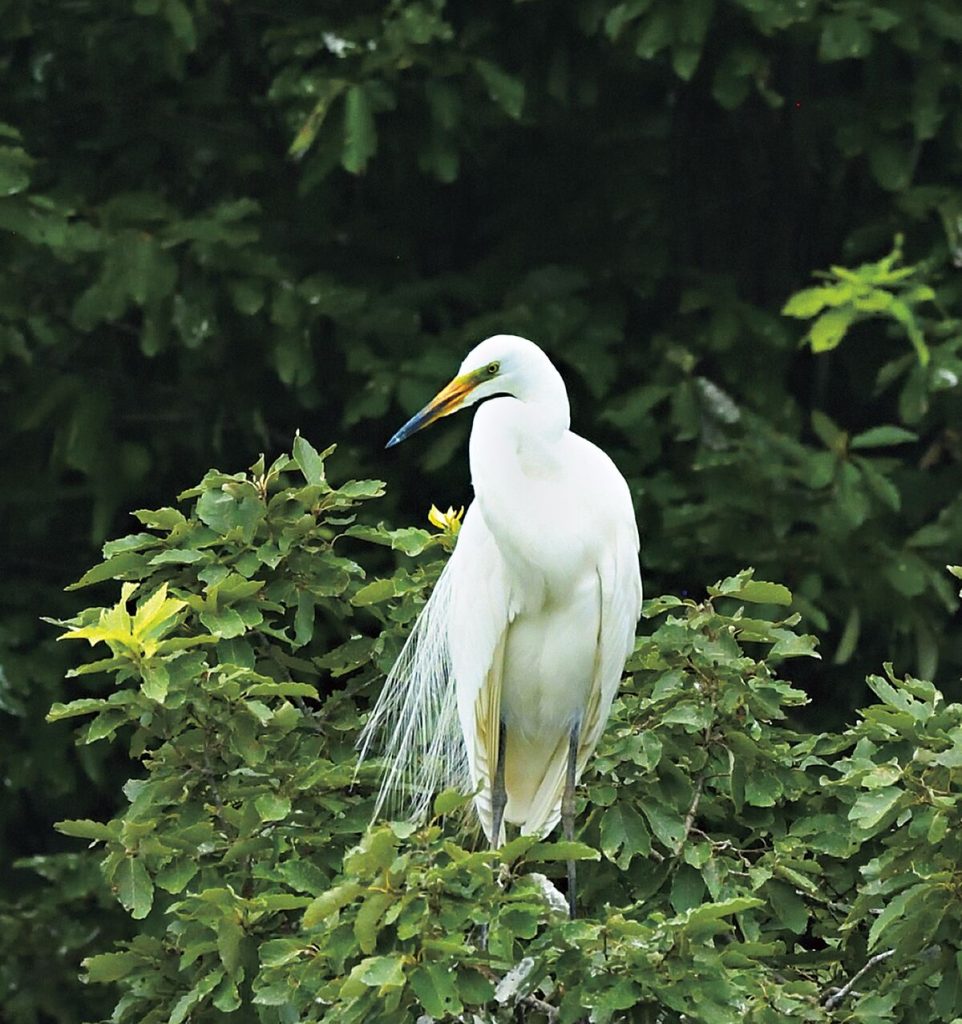Unexpected behaviour of Western Great Egret
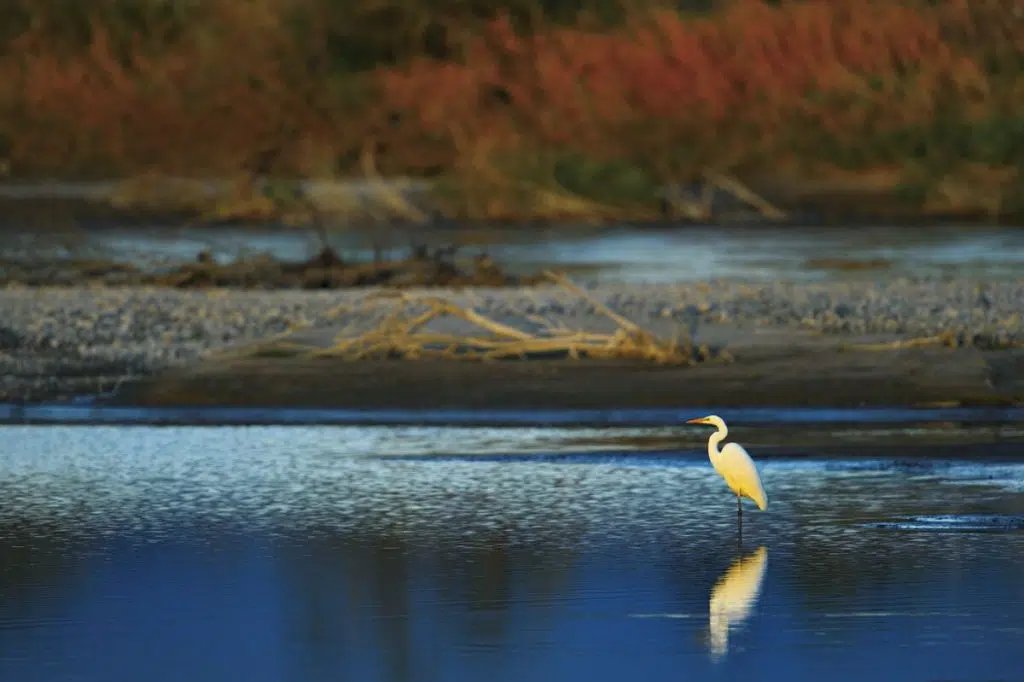
“Through the Lens” Fujingahou Magazine, December, 2023
Photos and text by HIH Princess Takamado
Photo edited by Koichi Fujiwara(NATURE’S PLANET)
The sky is always clearest in the winter of December and January. When filming, we arrive at the site at sunrise; this time, early on a mid-November morning at the Chikumagawa riverbed, it was very cold as expected. Looking at the white clouds high in the clear sky, the fiery autumn leaves and the white Miscanthus sacchariflorus ears swaying in the wind, I felt refreshed. The theme of this article was to be the Great Egret, Here are some photos taken on the riverbanks at this time of year.
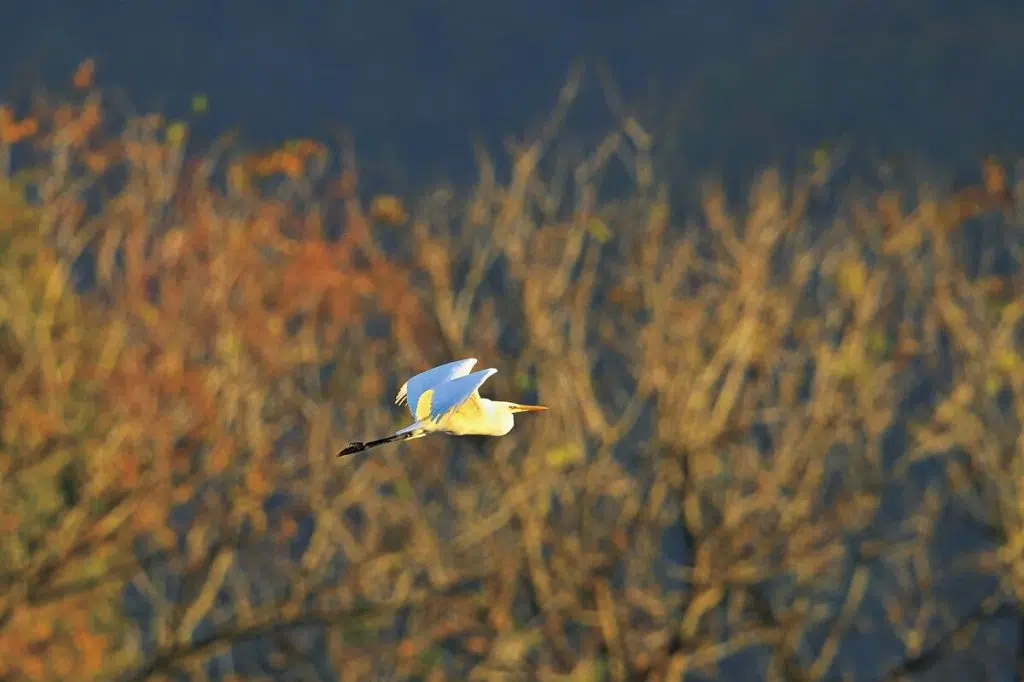
The term ‘White Egret’ or “Shirasagi”, often chosen as a subject for Japanese paintings, poems and haiku, is a generic term for white birds from the family Ardeidae; there is no species called ‘White Egret’. There are three main species of such white birds from this family found in Japan: the Great Egret, the Intermediate Egret and the Little Egret. Although they should be easy to distinguish as ‘large, medium and small’, it is often surprisingly difficult to identify a Great Egret or an Intermediate Egret when these birds are seen individually, but they can be recognized more easily side by side.
Many of you may have an image of Egret standing by the water’s edge or in the rice paddies all day long, hunting for fish, frogs and crayfish. The Great Egret pictured in the photo was also in the same spot for two days, moving back and forth in search of prey.
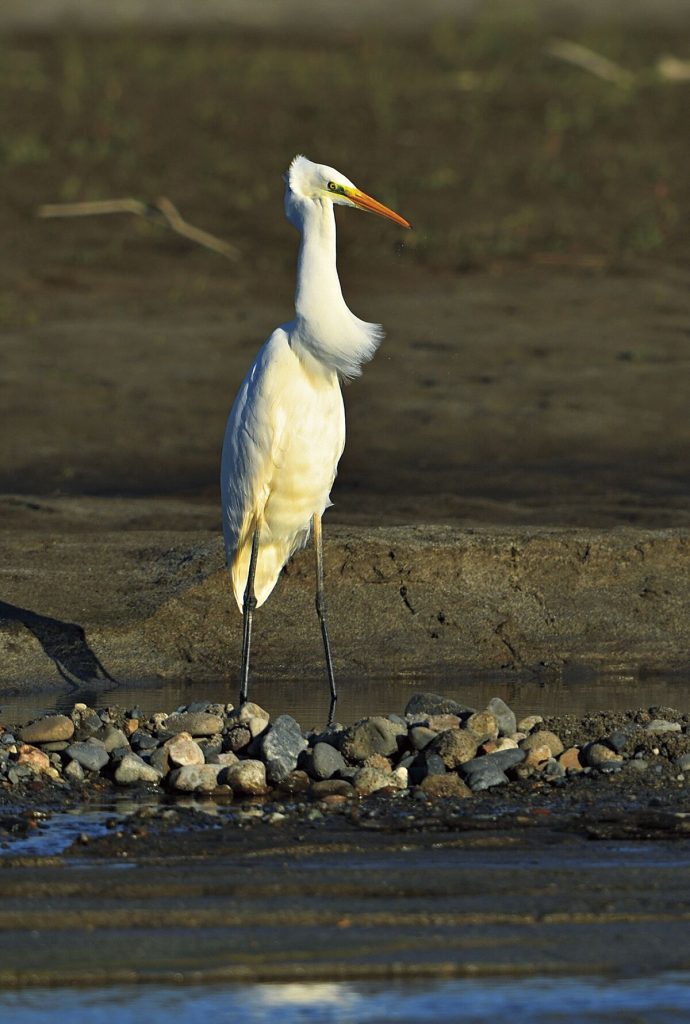
From inside my tent, I observed my surroundings from an ‘Egret’s eye view’. As always with photography, I anticipated its behaviour and concentrated on not missing a shooting chance, while at the same time hoping for something unexpected to happen! Waiting for such an opportunity, to our delight, there was an unexpected turn of events.
The first unexpected behaviour of a Great Egret occurred when it caught a very large fish. The Egret was trying to suck its food in headfirst, but after a while it slowly emerged from the water with the fish stick flicking around in its mouth. Then, about five metres away, it plopped its prey on the ground. The way it twisted its head to check on the fish at its feet from time to time was quite charming, and I couldn’t help but laugh. After a few minutes, the Egret picked up the fish again, headed for the shallows, dipped it in the water and swallowed it whole.
Egrets usually swallow their prey as soon as they catch it. The reason for this sequence of behaviour by the Egret photographed here is not clear: it may be related to the fact that it was monopolising the fishing area by itself. In layman’s terms, it may be that the Egret did not have to worry about other birds intercepting its prey and therefore did not have to eat in a hurry.
Not only do Egrets swallow small fish in one gulp, but they also dip their prey in water to make it more slippery and then swallow it headfirst. I was grateful for the shutter chance I had this time when I came across a large fish being swallowed and was fascinated to photograph it feeding while its slender neck was deformed by the prey.
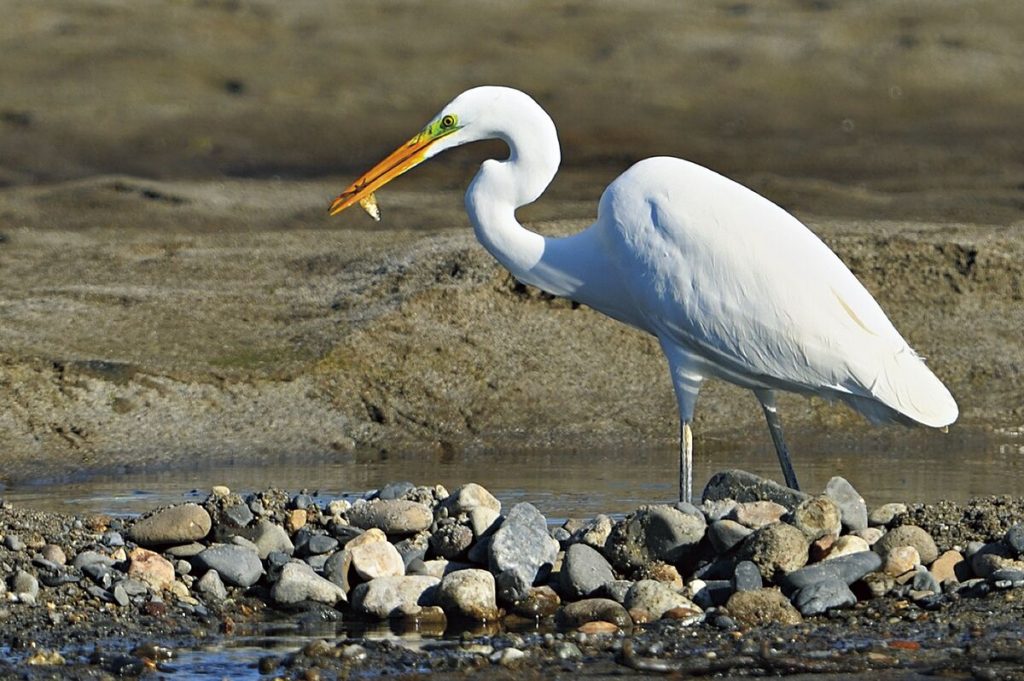
The photo featured above is the first after the bird swallowed. The wind was blowing and I was able to capture a slightly amusing moment that I have never photographed before. I could also see the satisfaction of having won the ‘battle’ in the expression on the Egret’s face after capturing such a large fish and putting it in its stomach. Probably due to the fact I was observing the scene from the Egret’s point of view all the time.
Lately, I think, photographing birds is a great excuse for me; as Honorary President of an environmental conservation NGO, I need to photograph birds and it is important to see them in the field. Going to different places to photograph is a ‘job’, so to speak. I feel very happy when I leave my documents and computer in my room and spend some time in the rich nature of Japan, mindlessly photographing the birds in front of me.
Watching birds in their daily lives is a real treat, with all sorts of drama, and I am sure that unexpected developments such as this one provide a good stimulus for the observers themselves. We hope that you too will enjoy the birds and the scenery of Japan’s four seasons.
